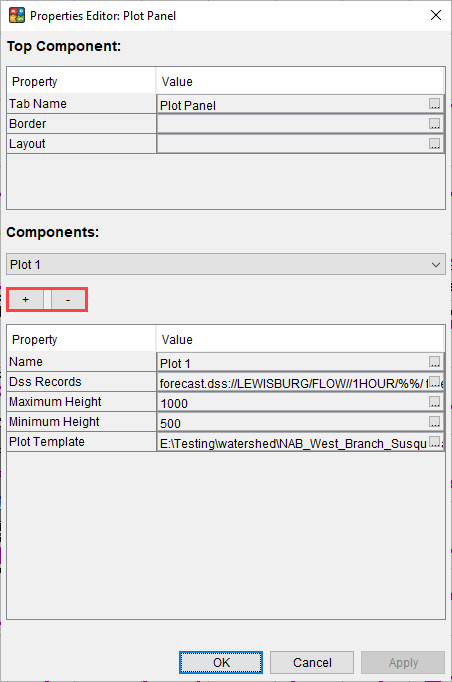Plot Widget
The plot widget is used to graphically display data. The plotting panel can be added to the dashboard by opening up the "file" option on the top left of the dashboard, then selecting "Add Widget" (Figure 1) and clicking on "Plot Panel" (Figure 2).
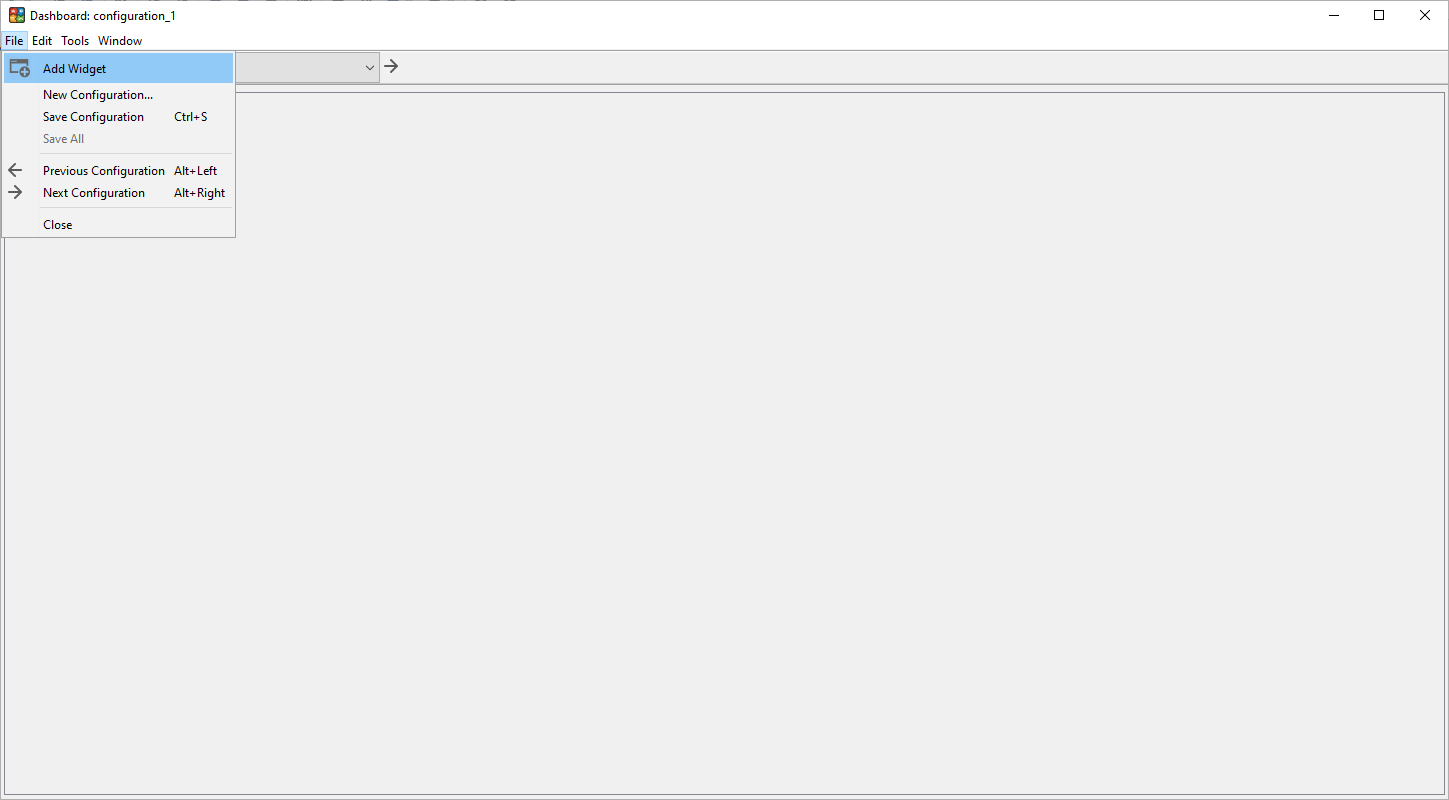
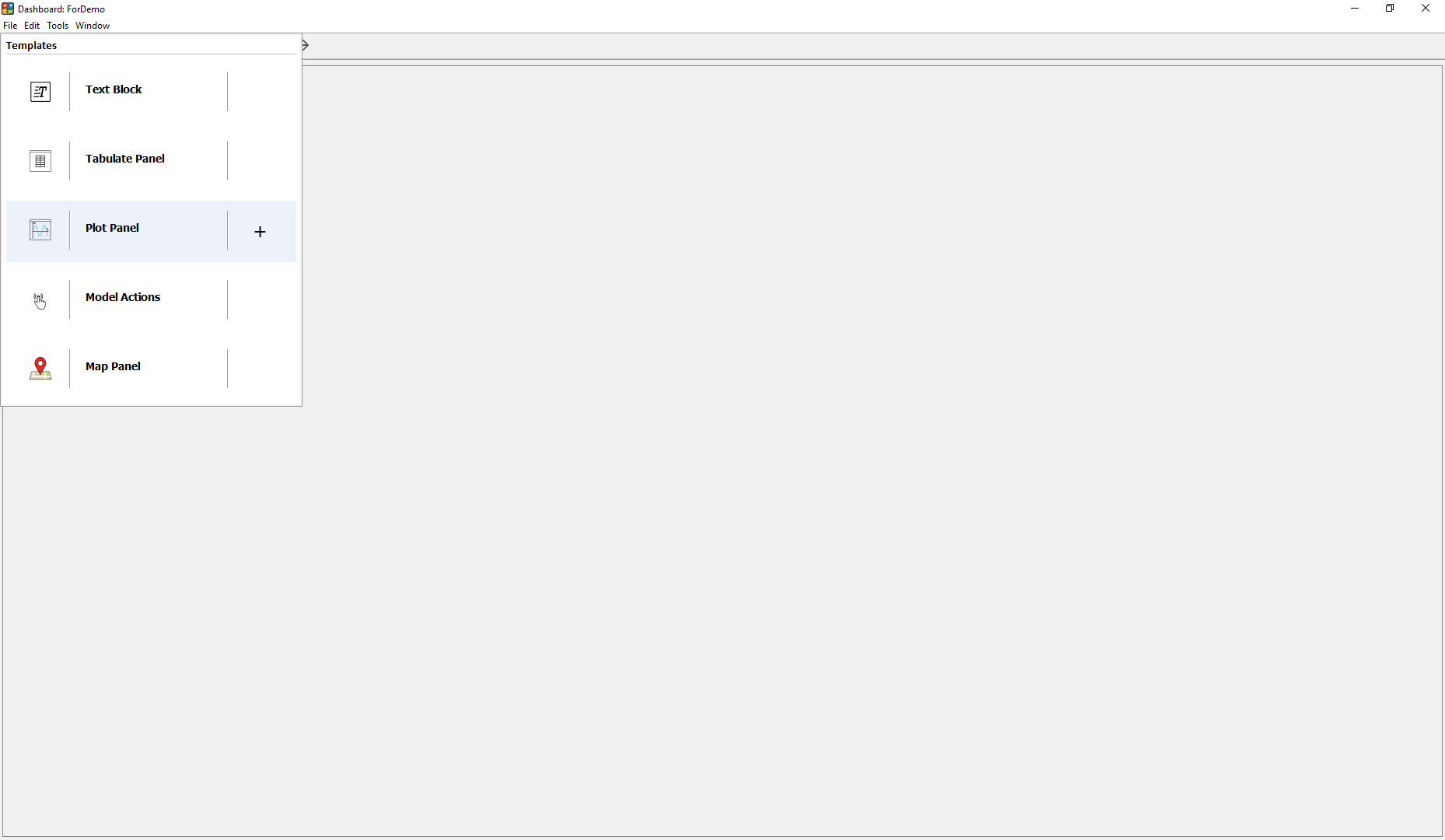
Once the Plot Panel is added to the dashboard, a set of blank graphs will show in the dashboard (background of Figure 3). You can then right click on the plot panel tab (denoted as "Plot Panel 1" in this example) and select the properties option. Then a "Properties Editor" should open as seen in Figure 3. To modify the options, you select the ellipses on the left side of the "Value" column.
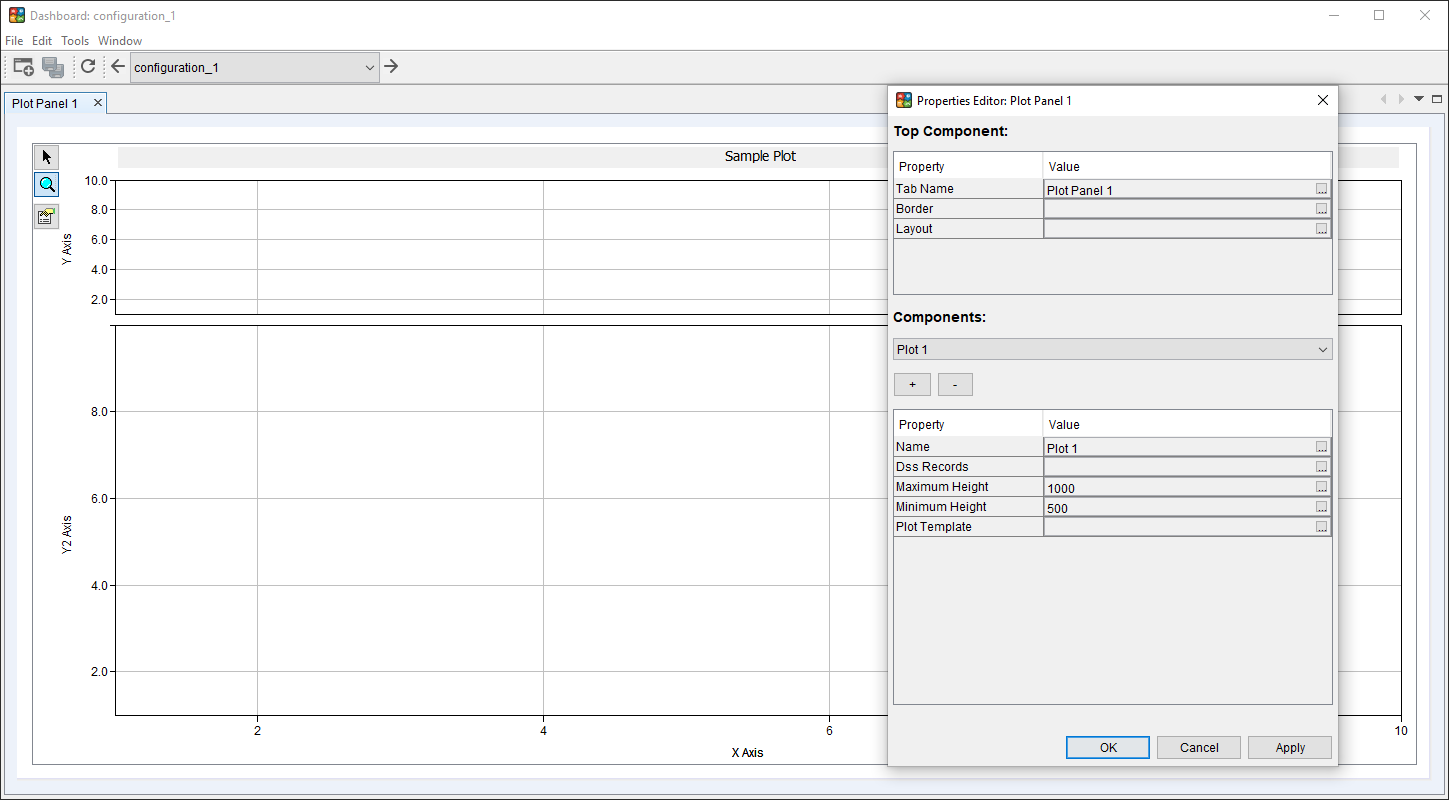
To add dss data to the graph, select the ellipses in the box to the right of "Dss Records". This will open a new box where the dss records can be added (Figure 4). You select the "Add Records..." button at the bottom of the window and this will prompt a DssVue window to open.
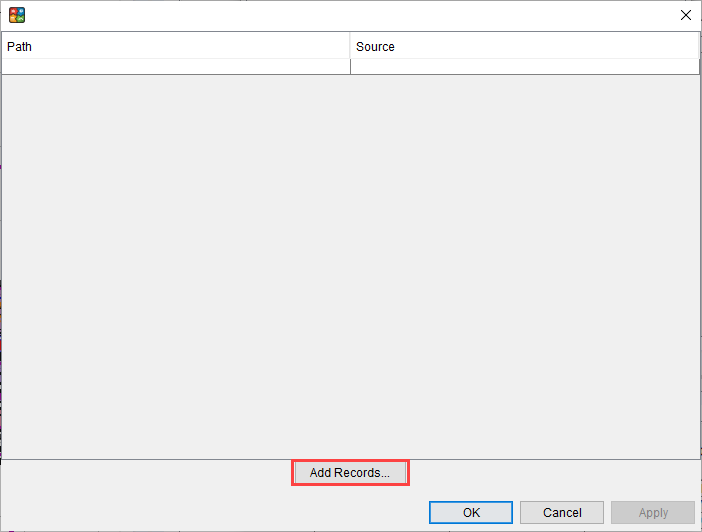
In the DssVue window, you can either put the file location of the dss file in the "File Name:" option or navigate to the dss file via the "File" then "Open" option. Once the dss file is opened, you can select the files of interest, select the files, and "Add Pathnames" (Figure 5).
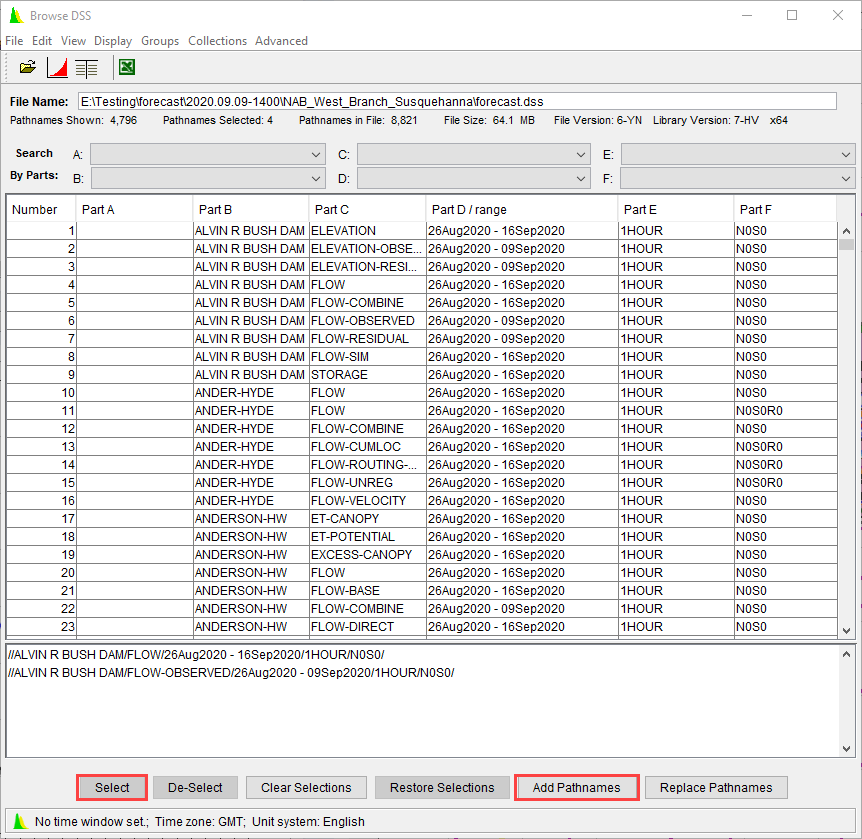
Once the "Add Pathnames" option is selected, a dialog box will pop up asking if the files are wanted to be stored using relative "Part F" options (Figure 6).
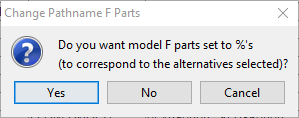
Selecting "Yes" will change the F part of the dss filename to percent signs (%) for each model key that would be used (example, if for HEC-HMS results, the F part would be %% assuming there is only a MFP or a MetVue alternative before the HMS model). This use of wildcards allows for the data shown to switch between forecast alternatives as the user progresses and not having to have different configurations for differing alternatives. If you select "No" when prompted about setting the F parts to "%", this will lock in the model key so the data will only be shown for the selected model alternative. This means that if you decide to display alternative A0B0 in the graph and chooses not to convert the F-part to %%, then the graph will only show results for A0B0 even if the user switches to running A0C0 (the use of %% would allow the table to be updated with the A0C0 results).
Additionally, the user can edit the plot properties using the icon denoted in Figure 7.
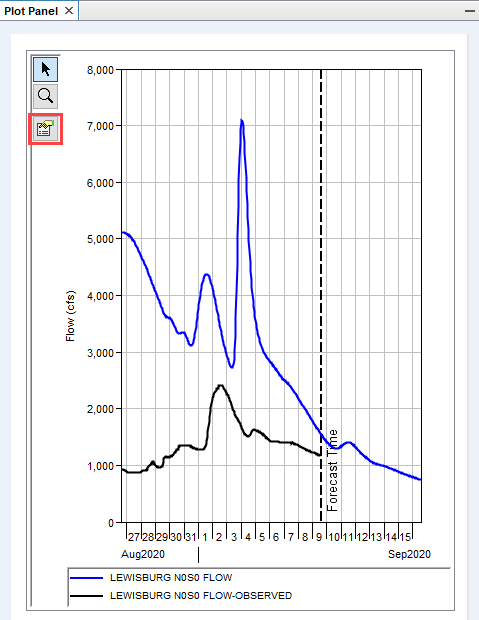
Then a properties window pops up where the line style, labels, and legend can be edited and a marker line can be added. If more than one graph is shown in the panel, the "Select Viewport" option can be used to move between graphs for property modifications.
You can select to have multiple graphs in a single plot. If you select parameters that are different units, the dashboard will create different graphs and graph like units together. These can be differentiated in the editor through the viewport option. Additionally, a second set of graphs can be added the the same plot panel. This option can be found under the properties editor. Shown in Figure 8, the plus and minus signs allows the user to add or remove graphs to the plot panel.
